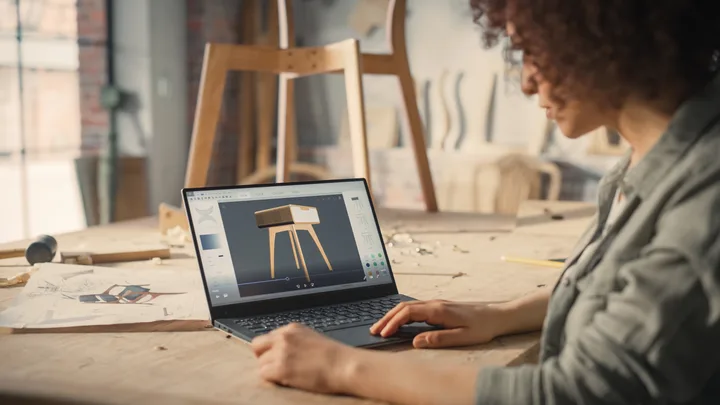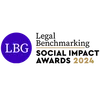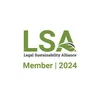A Guide to Design Rights for Start-ups and Scale-ups

Even for a small company, understanding IP can help protect your brand and innovations from others.
#
While not every company has the resources to invest heavily in IP, ensuring that your most valuable assets are protected can help secure vital funding.
Here’s a quick overview of design rights with some top tips for smaller companies and what you need to know before contacting an IP attorney.
What are design rights? #
When building an IP portfolio, design rights are often overlooked in favour of patent and trade mark protection. However, all three can have crucial roles to play to effectively safeguard your products.
A relatively low-cost and effective form of IP protection, design rights can cover many different aspects of a product or its packaging. They are commonly used in combination with other types of IP right to establish strong levels of protection.
Many people consider designs to be less valuable than patents due to their scope, which is limited to the appearance of a product. However, by strategically selecting different features for protection, it’s possible to build a defensive wall around your product that makes it very difficult for competitors to copy even a small detail without risking infringement.
Such holistic protection is well demonstrated in a technology product like a smart watch, where design rights could be used to protect both its physical appearance and aspects of its digital display. Design rights are key to protecting modern technologies such as mobile apps and graphical user interfaces (GUIs) as they can protect both 2D and 3D features.
What different forms of design protection are available? #
Designs can be protected through either registered or unregistered design rights. Each type has its own advantages and disadvantages.
Registered designs #
A registered design is a statutory monopoly granted by an intellectual property office such as the UKIPO or EUIPO.
This means that a third party cannot produce — either knowingly or unknowingly — products that incorporate elements of your registered design that fail to “produce a markedly different impact on the informed user” as the registered design. The owner of a registered design does not have to prove that it was copied to enforce such rights against a third party — just that it is ‘highly similar’.
A registered design lasts for an initial five-year period and protection can be renewed for up to 25 years in five-year increments. Registered designs are only granted following the submission of an application and payment of a fee. For products with a short shelf-life, the initial five-year period is likely enough to ensure that your products are well protected while they’re on sale.

Unregistered designs
#
In contrast, unregistered design rights are acquired automatically when a design is created.
These fall into two categories: the first being the UK design right. This arises automatically when an ‘original’ design is created — providing that the design is recorded, or an article is made according to the design. The UK design right protects the three-dimensional shape of a product and lasts for up to 15 years.
The second is the supplementary unregistered design, which differs from the UK design right in that it subsists automatically in novel designs (those that have individual character for the appearance of the whole or a part of a product, resulting from the features of the product itself and/or its ornamentation). Supplementary unregistered design rights last for a period of three years from the date on which the design was first made available to the public in the UK.
Limitations of unregistered design rights
#
While both UK design rights and supplementary unregistered designs are attractive to SMEs — and can be very effective when applied strategically — they have limitations. Firstly, the UK design right only applies to the shape and configuration of a design. Secondly, the supplementary unregistered design was created following Brexit to mirror community unregistered design rights (which offer identical protections throughout the EU). This means that a first disclosure in the EU destroys novelty in the UK and vice-versa. While simultaneous disclosure in the UK and EU may be an option, this is untested in the Courts — so we recommend that best practice is to register designs in both the UK and EU.
Obtaining registered design protection outside the UK #
There are three routes for obtaining protection outside the UK:
- National application — filing separate national design applications in each country where protection is required.
- Hague application — an international design application, referred to as a ‘Hague’ application, provides a bundle of national design rights. However, the system is centrally administered through WIPO, which can result in substantial cost savings and easier administration.
- EU design application — a single design application filed at the EUIPO provides design protection across all EU member states.

How quickly can design protection be secured?
#
The speed at which design protection can be granted, both in the UK and EU, provides a significant advantage over other forms of IP right. This is especially true in fast-moving sectors like consumer electronics, where a product’s shelf life may be short. A design registration can be issued within a few weeks in the UK and a matter of days in Europe. With registered designs, you can quickly possess enforceable rights.
This is particularly useful when competitors look to copy your products, pinching elements of your design to piggy-back on your reputation. While this may avoid patent infringement, possessing design rights can be harnessed to take technically inferior competitor products off the shelf.
Can I use design rights in combination with other forms of IP protection? #
Most brands are likely to benefit from registering trade marks to protect their name or logo and patents to protect their underlying product, invention or manufacturing process. Registered designs could be used to protect other valuable and differentiating aspects including the product’s shape, decorative surface features on its packaging or even the shape of the packaging itself.
Design rights are an ideal companion to trade mark rights as they can enhance and strengthen your brand identity, providing enforceable protection from the very early stages of brand development.
They are also great companions for patent protection. While patents provide strong protection for the technical aspects of a product, there is a delay before grant of two to three years while the search and examination process is conducted. This means that you may be unable to act against a competitor that starts selling a product highly like your own until your patent has been granted. By protecting aspects of the appearance of the device with design rights, enforceable and cost-effective IP protection can be gained quickly. Since registered rights give you a monopoly in the marketplace, your competitors could be forced into time-consuming and costly product redesigns while your patent applications are pending.
Is it worth the cost and effort it takes to file a design application?
#
In comparison to patents, design rights are inexpensive to secure, making them accessible to both multinational corporations with long-term IP strategies as well as SMEs and start-ups, who must be more agile and carefully balance budgets.

Speak to a design rights expert #
The importance of having robust and detailed IP strategies in place is continually growing. To find out how Murgitroyd can help you and your business to maximise your IP potential, contact one of our expert design rights attorneys.




















